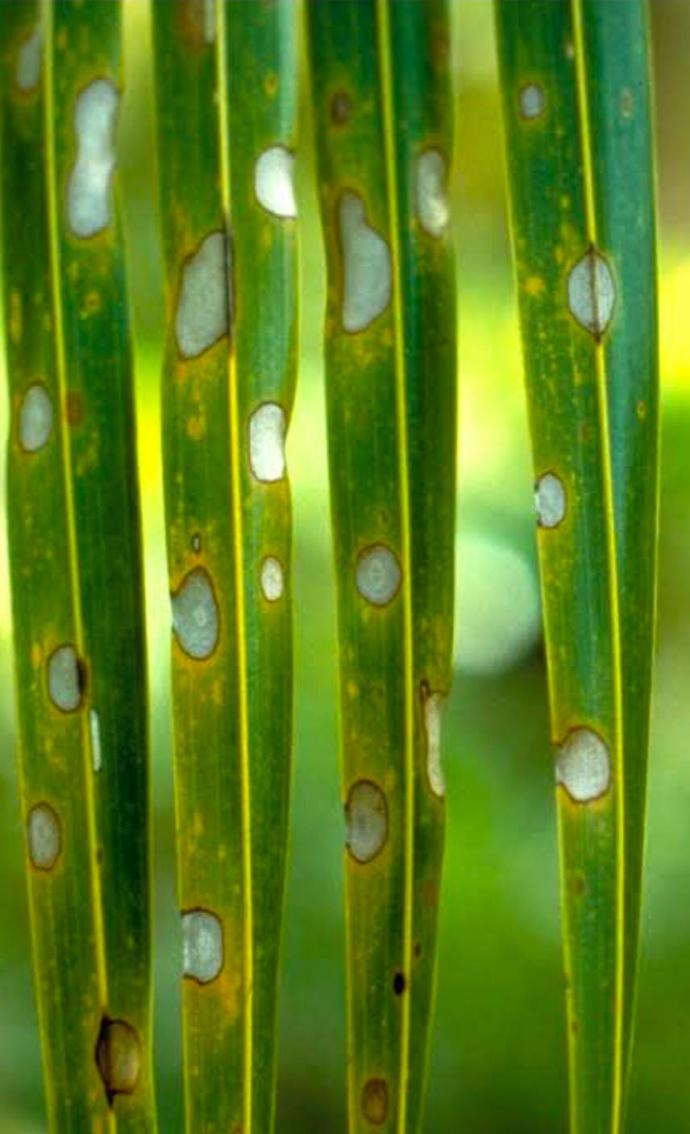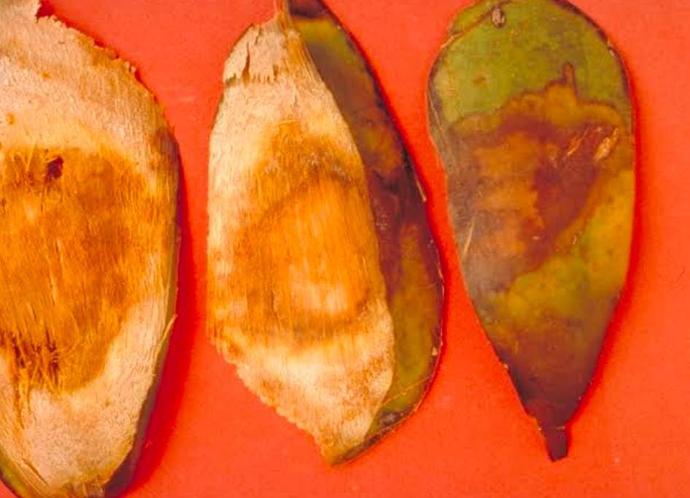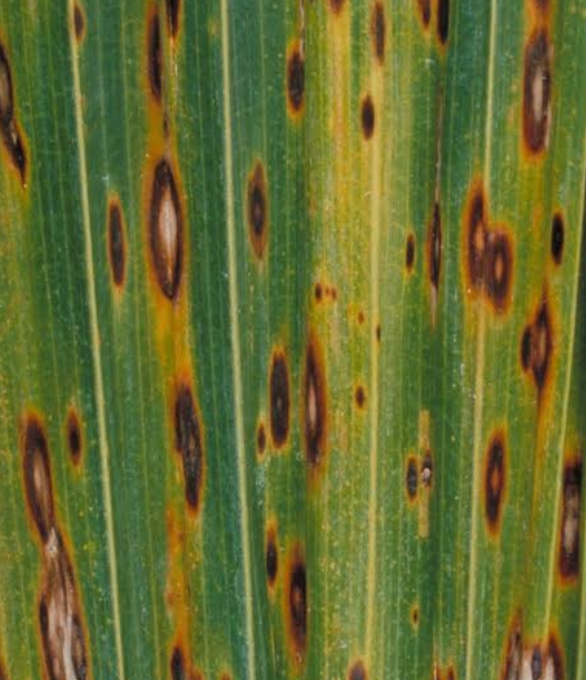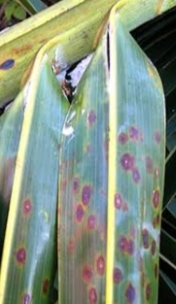Coconut(కొబ్బరి(నాటు, ఈస్ట్ కోస్ట్, హైబ్రిడ్))Plant
Coconut(కొబ్బరి(నాటు, ఈస్ట్ కోస్ట్, హైబ్రిడ్)), a specific variety of coconut, may have care requirements similar to other coconut trees. Plant in well-draining soil with full sun exposure. Water consistently, especially during dry periods. Pruning can be done to remove dead or damaged fronds.

Habit
Palm
Height
15-30 m
Growth
Fast
Soil
Well Drained, sandy loam
Shade
Full Sun
Moisture
Moist
Edible
Yes
Medicinal
Yes
Origin
India, SE Asia
Climatic Condition
Tropical, Humid
Temperature (°)
20-35°C
Humidity (%)
60-90%
Potting media
Peat, compost
Fertilizers
Organic compost, NPK
Watering
Regular watering
Plant Weight
10-20 kg
Flowering Time
Year-round
Soil Ph level
5.5 - 7.5
Water Ph level
5.5 - 7.5
Soil EC
1-2 dS/m
Yield Per Plant
50-150 nuts per tree
NPK ratio
10:10:10
life Span
50+ years
Health Benefits
Coconut oil, hydration, medicinal
Suggested Grow Media or Potting Mix ?
50% sandy soil, 30% compost, 20% perlite
Suggested Fertigation/Fertilizers
Fertilize every 6 weeks with a balanced, slow-release fertilizer.
Common Diseases and Remedies
Bud rot , Leaf blight
Spindle shaped drops down on leaves causes dropping of successive leaves .
Proper spacing , Burn the severely affected leaves to prevent the further spread .
HEALTH BENEFITS
· Naatu (Native): Rich in natural nutrients, commonly used in traditional medicine.
· East Coast: Preferred for tender coconut water, high electrolyte content.
· Hybrid: Higher yield, good for both oil and coconut water production.
What Is An Coconut(కొబ్బరి(నాటు, ఈస్ట్ కోస్ట్, హైబ్రిడ్)) Tree?
Cocos nucifera, also known as 'Malay Dwarf', is a variety of coconut palm that produces green coconuts. Its compact size makes it suitable for small spaces and container gardening. The green coconuts of this plant are usually harvested for their refreshing water and soft flesh. It grows in tropical climates and requires well-drained soil and regular watering.

What Are The Different Types Of Coconut(కొబ్బరి(నాటు, ఈస్ట్ కోస్ట్, హైబ్రిడ్)) Plants?
1. Malayan Green Dwarf
Known for its compact size, this variety produces medium-sized green-shelled coconuts.
2. Malayan Yellow Dwarf
Similar to the Green Dwarf, but with a yellow-green shell when fully grown.
3. Malayan Tall
This variety is larger and taller than the dwarf variety, with longer leaves and larger coconuts.
4. Malayan Red Dwarf
A variety with a reddish shell when ripe.
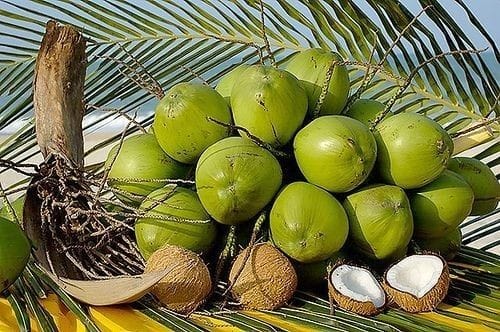
How to Care Coconut(కొబ్బరి(నాటు, ఈస్ట్ కోస్ట్, హైబ్రిడ్)) ?
1. Location
The coconut(కొబ్బరి(నాటు, ఈస్ట్ కోస్ట్, హైబ్రిడ్)) plant grows in tropical and subtropical regions with warm temperatures, abundant sunlight, and well-drained soil. It prefers humid coastal areas and is commonly found in countries near the equator, such as Southeast Asia, parts of Africa, the Caribbean, and islands of the Pacific Ocean. Specific locations include Malaysia, Indonesia, Thailand, the Philippines, Sri Lanka, India, and various islands in the Pacific and Indian Oceans.
2. Sunshine
coconut(కొబ్బరి(నాటు, ఈస్ట్ కోస్ట్, హైబ్రిడ్)) plants require sufficient sunlight to grow. They prefer full sun exposure, ideally at least 6 to 8 hours of direct sunlight per day. Lack of sunlight can lead to delayed growth, poor fruit development, and increased susceptibility to disease. Therefore, it is important to plant it in a location that receives sufficient sunlight throughout the day.
3. Soil
coconut(కొబ్బరి(నాటు, ఈస్ట్ కోస్ట్, హైబ్రిడ్)) plants prefer well-drained soils that are rich in organic matter. Sandy loam or clay soils are suitable for cultivation. These types of soil drain well and prevent water blockages that can cause root rot. Additionally, the soil pH should be slightly acidic to neutral, ideally between 5.5 and 7.0. If the soil in your area is unsuitable, you can improve it by adding organic matter such as compost or well-rotted manure to improve fertility and drainage. It is also important to prevent the soil from becoming too salty, as coconut plants are sensitive to high levels of salt in the soil.
4. Hydration
coconut(కొబ్బరి(నాటు, ఈస్ట్ కోస్ట్, హైబ్రిడ్)) plants require regular watering, especially during the early stages of growth. They prefer moist soil, but not soggy soil. To promote healthy growth and fruit development, it is important to keep the soil constantly moist, especially during hot, dry periods. However, it is important not to overwater, as overwatering can cause root rot. To encourage deep root growth, allow the top few inches of soil to dry slightly between waterings before watering thoroughly. Adjust watering frequency depending on weather conditions and soil moisture.

5. Nourishment
The coconut(కొబ్బరి(నాటు, ఈస్ట్ కోస్ట్, హైబ్రిడ్)) plant grows in a warm tropical climate and requires regular watering, well-drained soil rich in organic matter, and plenty of sunlight. In addition, occasional fertilization with a balanced fertilizer containing nitrogen, phosphorus, and potassium will help. You can also provide additional nutrients by mulching with compost or aged manure to retain moisture and add essential nutrients to the soil. Regular care, such as removing dead leaves and pests, is also important for the overall health of the plant.
6. Issues
Deficiency of essential nutrients such as nitrogen, potassium, and magnesium can lead to yellowing of leaves, stunted growth, and reduced fruit production. Regular fertilization will help. The most common pests that attack palm plants include palm mites, beetles, and caterpillars, which can cause damage to leaves, stems, and fruit. Appropriate pesticide application. Coconut trees are susceptible to diseases such as deadly yellowing, root rot, and leaf blight that can cause the plant to wilt, turn yellow, and eventually die. Good hygiene practices, such as removing infected plant material and using disease-resistant varieties, can help prevent the spread of disease. Introducing natural enemies can help control pest populations.
What are the Benefits of Malayan Green Coconut ?
coconut(కొబ్బరి(నాటు, ఈస్ట్ కోస్ట్, హైబ్రిడ్)) plant has several benefits such as: Coconuts are rich in vitamins, minerals, and healthy fats, providing important nutrients for overall health. Coconut water is a natural electrolyte-rich drink that hydrates the body and helps replace lost fluids. Every part of the coconut tree, from the fruit (coconut water and pulp) to the shell (fiber) and husk (charcoal), is used to provide a variety of products and materials for consumption, construction, and industry. Coconut oil, extracted from coconuts, is used in a variety of skin care products because of its moisturizing and nourishing properties. Coconut milk, cream, and oil are staples in many kitchens, adding flavour and richness to dishes.
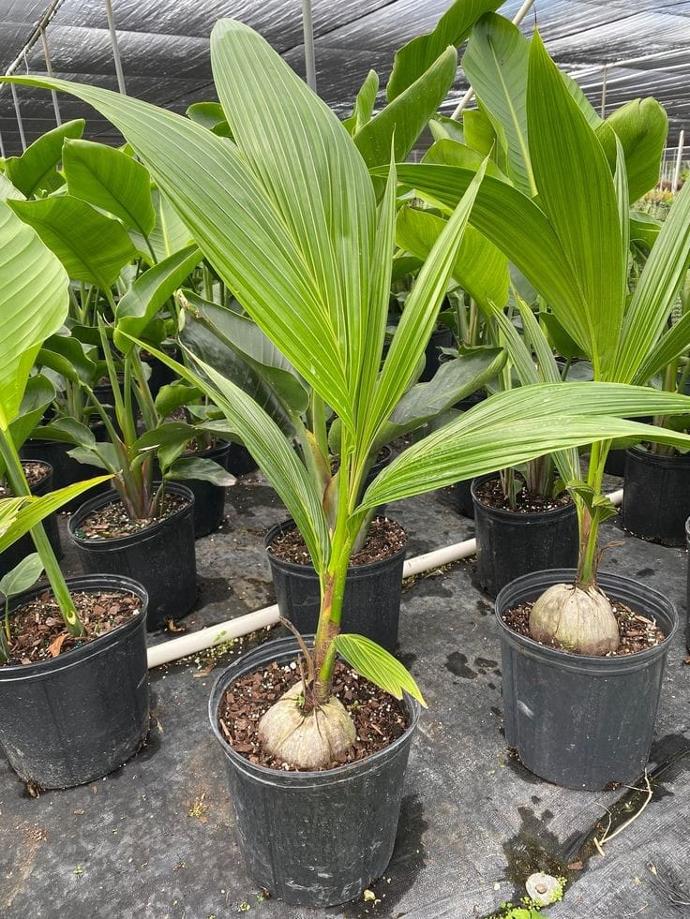
FAQs About Growing Coconut(కొబ్బరి(నాటు, ఈస్ట్ కోస్ట్, హైబ్రిడ్))
1. What are the optimal growing conditions for the coconut(కొబ్బరి(నాటు, ఈస్ట్ కోస్ట్, హైబ్రిడ్)) plant?
It lives in a humid, warm tropical climate with temperatures between 27°C and 32°C. It does not tolerate frost or freezing temperatures. Malayan green coconut plants require sufficient sunlight for optimal growth and fruit production. Requires at least 6 to 8 hours of sunlight each day. Well-drained sandy or loamy soil with a pH range of 5.0 to 8.0 is ideal for Malayan green coconut plants. It grows best in soil rich in organic matter.
2. How long does it take for a coconut(కొబ్బరి(నాటు, ఈస్ట్ కోస్ట్, హైబ్రిడ్)) to mature and bear fruit?
Malayan green coconut plants usually take about 6 to 10 years to mature and bear fruit. However, the exact timing may vary depending on a variety of factors, including growing conditions, climate, soil quality, and the specific variety of palm plant. Once mature, Malayan green coconuts can bear fruit all year round, with peak production occurring during the warm season in tropical regions. Each coconut tree can produce between 50 and 200 coconuts per year, depending on its health, age, and growing conditions.
3. How do I harvest coconuts from a coconut(కొబ్బరి(నాటు, ఈస్ట్ కోస్ట్, హైబ్రిడ్)) tree in Malayan ?
Mature coconuts usually have a brown outer shell and may have started falling from the tree naturally. Avoid harvesting green coconuts as they are not fully ripe and may not have developed their distinctive flavour or texture.
4. Can Malayan green coconut plants tolerate low temperatures and frost?
Palm plants are cold sensitive and cannot tolerate frost. It is a tropical plant that grows in a warm climate with a temperature of 27°C to 32°C. Temperatures below 0°C (32°F) can cause damage to the plant, including frostbite on leaves and stems.
5. How often should I water coconut(కొబ్బరి(నాటు, ఈస్ట్ కోస్ట్, హైబ్రిడ్)) plants ?
Mature coconut(కొబ్బరి(నాటు, ఈస్ట్ కోస్ట్, హైబ్రిడ్)) plants with well-established root systems typically require watering every 1 to 2 weeks. Newly planted or young Malayan green coconut plants may require more frequent watering, especially during the establishment stage.
